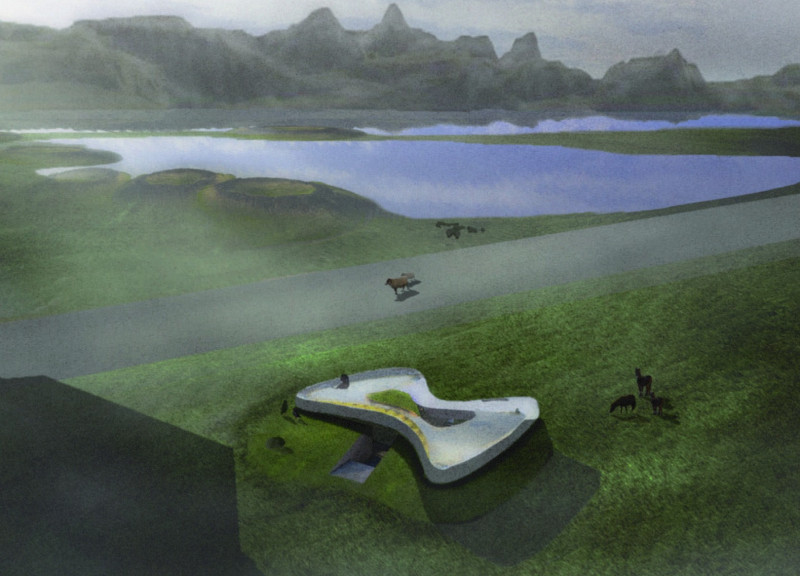5 key facts about this project
The project prominently features an open plan layout that facilitates flexibility in usage. This design choice allows for various configurations, making it suitable for a range of activities, from community gatherings to educational workshops. Natural light plays a crucial role in the interior design, with strategically placed windows and skylights that illuminate common areas while fostering a connection to the outdoors. This emphasis on light and space enhances the overall ambiance, making the environment more welcoming and accessible.
One of the unique design approaches utilized in this project is the thoughtful selection of materials that resonate with the local landscape and culture. The façade incorporates a blend of textured stone and timber cladding, which not only enriches the visual appeal but also promotes sustainability. The use of these materials signifies a deep respect for the traditional building techniques of the region while simultaneously introducing modern sensibilities. The combination of natural materials offers durability and longevity, which are vital for the project’s intended use and maintenance.
The architectural designs contain notable elements, such as green roofs and outdoor terraces, which are designed to promote biodiversity and provide additional recreational spaces for users. These features reflect a growing awareness of environmental responsibility in architecture, integrating sustainable practices into everyday functionality. The green roofs not only contribute to insulation, reducing energy costs, but also enhance the aesthetic value of the building, blending it harmoniously with its natural surroundings.
Moreover, the layout prioritizes inclusivity through universal design principles. Wide corridors, accessible entrances, and thoughtfully placed rest areas ensure that the space is navigable for all community members, including those with mobility challenges. This aspect of design demonstrates a commitment to social equity and reflects the project’s overarching goal of serving as a communal hub.
The incorporation of technology within the interior spaces further enhances user experience. Smart building systems are employed to optimize energy efficiency, monitor environmental conditions, and ensure comfort. Interactive displays and digital interfaces provide visitors with information about the building’s functions, upcoming events, and resources available for community members, thus fostering a sense of connection and involvement.
Landscaping around the building has also been handled with care, creating pathways and gathering spaces that encourage outdoor activities and connections among users. The external environment complements the architectural design, featuring native plant species that require minimal maintenance while promoting ecological balance. Such landscaping enhances the overall aesthetic and contributes to the well-being of those who visit the site.
In summary, this architectural project represents a modern interpretation of community-centric design, blending functionality with innovative sustainability practices and engaging aesthetics. By examining elements such as architectural plans, architectural sections, and architectural ideas, readers can gain deeper insights into the project's comprehensive approach. The goal is to inspire and educate the community, nurturing a vibrant space that stands the test of time while remaining deeply rooted in its cultural and environmental context. For more details, the project presentation offers an opportunity to explore the intricate details and design narrative further, encouraging a reflective experience of this architectural endeavor.


























